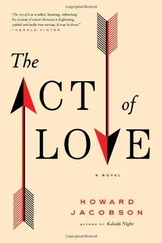Besides, the Bones were not without roots. “Boneman” groups had been rising at dawn to wake up the town on Mardi Gras morning for more than a century. For neotraditionalists like Skip and his Bywater buddies, this was the attraction—the connection to the mystical New Orleans gone by, a place where the seamless merge of life and death was celebrated with happy funeral music. This was the essence of the carnival, Skip always said, dredging up his altar boy Latin. Carne means “meat,” vale means “good-bye.” Lent was coming, things would be given up. Carnival was the festival of the flesh and you might as well drink up because after Fat Tuesday came Ash Wednesday with its cold reminder of the dust to which you will return. It was like the refrain in the song the brass bands sang at the traditional secondline funerals—life was merely a ramble, an ephemeral ramble around the town, until the butcher cut you down.
So why not be a Bone Boy, paint a skeleton on a black hoodie and run into the street at the crack of dawn banging drums and screaming things like “Wake up, future dead!” and “Who next? You next! ”
After the storm, some said Mardi Gras should be suspended, even if that had never happened except for world wars and when the NOPD went on strike. The Bone Boys did not agree with this sentiment. On the contrary, Skip thought, the storm had done much to repurpose their mission, to purge it of unfortunate hipster irony. Instead of proclaiming the old-news inevitability of death, it was important to wake up the town so everyone knew they were still alive. That was why Skip had to have that water-stained drum. Spiritualized by the Flood, it was the perfect post-Katrina thing to bang on.
The drum was part of a rummage sale, mostly a pile of storm-ravaged junk haphazardly displayed along the paint-peeling walls of the house at the corner of Piety and Royal. It was a motley, obviously scavenged array of mismatched things: a couple of waterlogged Allen Iverson jerseys, a pair of andirons, a Weber grill, some flowerpots, a bed frame, an adding machine covered with dried mud. Nothing anyone would want.
“How much for the drum?” Skip asked the man standing there with his back turned.
At the sound of Skip’s voice the guy turned around. He was tallish but bent over, probably in his forties, but that was hard to gauge with dark bubble shades covering his eyes. Over a greasy New Orleans Saints T-shirt, he wore a thin black leather jacket with the sleeves rolled up to reveal arms covered with what Skip immediately recognized as prison tattoos, blue, black, and blotty. Those must have hurt, Skip thought, picturing a commingled stream of blood and ink dripping onto the cement jailhouse floor. On his right arm the man bore the likeness of a hundred-dollar bill complete with a blurred head shot of Benjamin Franklin. Beside the bill was the inscription “BY ANY MEANS NECESSARY.” Tattooed onto the guy’s stomach, visible between the hem of his too-small T-shirt and his beltless jeans, was simply “NOLA.”
To Skip, this second tattoo seemed redundant. Where else could this individual be from? The way he looked, like some unhinged brigand, his haircut a whacked-off Mohawk in the front and long and stringy in the back, his river rat amalgam of off-angled Brooklynese with the occasional flowery Southernism thrown in, the guy was a yat —the tag stemming from the universal greeting “Where y’at?”—a species of Orleanian more indigenous than that army of termites munching away at the foundation of your house.
“How much for the drum?” Skip repeated.
“Can’t you read?” the man replied, pointing to a nearly illegible handwritten sign reading, “$100—take it all away.”
Skip had no need for any of the trash splayed across the sidewalk. “I’ll give you a hundred for the drum alone,” he bargained. “Keep the rest of the stuff and sell that for a hundred.”
The man just kind of hung in space the way becalmed video game characters do, awaiting instructions from a joystick. On the small nearby stoop was a gaunt, almost concave woman, with henna red hair and chalk-colored skin. The girlfriend, Skip surmised. Beside her, sitting on folding chairs, were two men, one white, one black, both in what looked to be their late sixties, wearing those plastic-brimmed nautical caps aging jazzmen favor. They were drinking Pabst Blue Ribbon out of coffee mugs, or so it seemed from the number of empty beer cans at their feet.
“Take it or leave it,” the man finally said, pointing at his sign.
That about tore it from Skip’s perspective. He’d already made his best offer. Walking away, he heard the man’s voice behind him. “Wait a minute,” the man said. “I’ve seen you around here. You’re a neighbor . That’s a whole different story. I got a lot of things. Interesting pieces.”
It was then, Skip remembers, that the man, who had now introduced himself as Dave, Dave Dominici, reached under a mottled table and pulled out a small lamp. “Check it out, neighbor . This isn’t part of the other deal. It’s separate,” Dominici said, flashing a gap-toothed, leering jack-o’-lantern carny smile. “This is going to be right up your alley. There’s a man for every product, and this is the thing for you. I know it.”
The lamp in his hand, Skip felt his collector’s impulse, his reverence for a particular object seen within the proper context, a talent cultivated in backdate magazine stalls, guitar salesrooms, and a thousand hours on eBay, click in. A quick scan revealed what appeared to be a beaux arts—style lampshade (the plastic fixture, from China, was of no interest) likely made in the mid-twentieth century. Ten inches across the top, a foot at the base, composed of panels, eight around, the shade’s condition far from perfect but not too bad. Skip’s first thought was he might be able to use it in his guest room.
Then something caught his eye about the lampshade frame, how the thin metal latticework was held together. When he was running his guitar shop back in Jersey, Skip often handled vintage German instruments, Höfners and Framuses for the most part. Both brands made a high-quality product (Höfner’s jazz models and the hollow-body violin bass Paul McCartney played were especially good), but many players complained about the so-called popsicle stick structure of the guitar neck. Rather than a single piece, the German necks were composed of thin layers of wood sandwiched together with glue. The necks never warped, but to some ears they didn’t resonate like the single-piece models. This made the German guitars sound, Skip thought, a little dead.
One other thing Skip noted about the German guitars whenever he obsessively dismantled and reassembled his stock was the solder. Funny how little details stick in your mind. The solder on American-made Fenders and Gibsons looked silvery and a little blobby. German solder had a darker, bluish appearance, with a liquid, almost oily sheen. The lampshade solder looked like that.
Now he began to grok it, the material of the lampshade itself. The warmth of it. The greasy, silky, dusty feel of it. The veined, translucent look of it.
“What’s this thing made out of, anyhow?” Skip asked.
“That’s made from the skin of Jews,” Dominici replied.
“What?”
“Hitler made skin from the Jews!” Dominici returned, louder now, with a kind of goony certainty.
With that, the two old Pabst drinkers suddenly came to life. “Nazis! Adolf Hitler!” said the white guy.
“That’s right. World War Two! Motherfucking Nazis!” said the black guy.
“Believe me, neighbor, ” said Dominici, a half smile on his bumpy face. “Hitler made skin from the Jews. It’s a historical fact !” He pointed at the lampshade Skip now held in his hand. “You want it? Thirty-five dollars. That’s a heck of a good deal.”
Читать дальше












